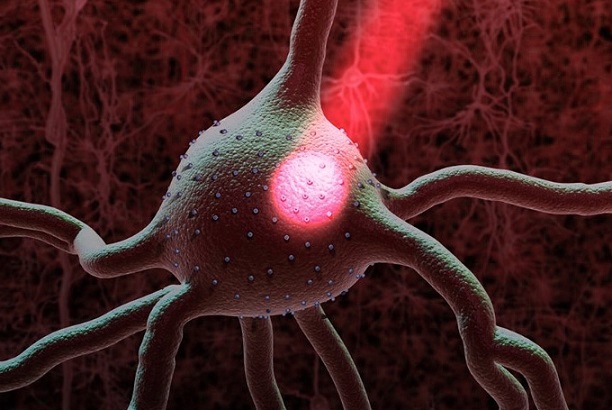Optogenetics Brings New Hope for Restoring Vision in Age Related Macular Degeneration
Nikhil Prasad Fact checked by:Thailand Medical News Team Sep 10, 2025 3 months, 3 weeks, 6 days, 4 hours, 41 minutes ago
Medical News: A Silent Threat to Sight
Age-related macular degeneration (AMD) is one of the leading causes of vision loss among people over 55 worldwide. It affects nearly 200 million individuals today, and that number is expected to rise to 300 million by 2040. The disease gradually damages the central part of the retina, known as the macula, making everyday tasks like reading, driving, and recognizing faces extremely difficult. While drugs that block abnormal blood vessel growth have revolutionized treatment for the “wet” form of AMD, there are still very limited solutions for the “dry” form, also called geographic atrophy. This
Medical News report highlights a revolutionary new approach called optogenetics, which is being explored as a way to bring back sight for those whose vision has been lost.
 Optogenetics Brings New Hope for Restoring Vision in Age Related Macular Degeneration
What is Optogenetics
Optogenetics Brings New Hope for Restoring Vision in Age Related Macular Degeneration
What is Optogenetics
Optogenetics is a cutting-edge technique that uses light-sensitive proteins called opsins to reprogram nerve cells in the retina. These proteins can be delivered into the eye using specially engineered viral carriers, most commonly adeno-associated viruses (AAVs). Once introduced, the retinal cells can be made responsive to light again. Unlike bulky retinal implants or temporary drug treatments, optogenetics has the potential to restore light perception through a single treatment that enables cells to communicate visual information directly with the brain.
How It Works in AMD
In AMD, the photoreceptor cells that normally sense light are damaged or destroyed. However, many other cells in the retina, such as bipolar cells and ganglion cells, remain intact even in later stages of the disease. By inserting opsins into these surviving cells, researchers can bypass the destroyed photoreceptors. External devices, like special goggles with light-emitting systems, can then stimulate these reprogrammed cells, creating new visual signals. Preclinical studies in animal models, including mice with retinal degeneration, have shown restored light responses, improved navigation ability, and even recognition of objects after treatment.
Promising Findings from Clinical Studies
The researchers—Pier Luigi Grenga from G.B. Grassi Hospital in Rome, Chiara Ciancimino and Serena Fragiotta from St. Andrea Hospital and “Sapienza” University of Rome, and Alessandro Meduri from the University of Messina—reviewed progress made so far. They noted that early clinical trials in patients with other retinal conditions such as retinitis pigmentosa already showed hopeful results. For instance, a legally blind patient treated with AAV2-ChrimsonR gene therapy, combined with training goggles, regained the ability to perceive objects. Similar trials with new proteins like MCO1 and ChrimsonR showed improved light sensitivity without severe side effects.
Hurdles and Future Directions
Despite the excitement, there are still challenges before o
ptogenetics can become a routine treatment for AMD. Current methods often restore only limited or low-resolution vision, which may allow for object recognition but not fine detail like reading. Delivering the genetic material precisely to the right retinal cells remains difficult, and long-term safety needs careful monitoring. Researchers are now developing next-generation opsins that are more sensitive to natural light and engineered viruses that can safely reach deeper retinal layers. Combining optogenetics with protective drugs or gene therapies may also improve results.
Conclusion
Optogenetics is not science fiction anymore—it is rapidly becoming a real medical option. The findings suggest that reprogramming the surviving cells of the retina could one day give back a form of sight to millions who currently face blindness from AMD. While the road to clinical application is filled with challenges, each new discovery brings patients closer to a future where vision restoration is possible. Importantly, the therapy may work best in individuals treated before the disease causes widespread retinal damage. As the technology matures, it may transform AMD from an untreatable cause of blindness into a condition with hope for recovery.
The study findings were published in the peer reviewed journal: Biomolecules
https://www.mdpi.com/2218-273X/15/9/1286
For the latest on Optogenetics, keep on logging to Thailand
Medical News.
Read Also:
https://www.thailandmedical.news/news/study-shockingly-finds-that-glp-1-drugs-used-for-diabetes-or-weight-loss-increases-risk-of-macular-degeneration
https://www.thailandmedical.news/news/doctors-in-china-warn-that-covid-19-can-cause-macular-damage
https://www.thailandmedical.news/news/tackling-age-related-macular-degeneration-with-antioxidants
